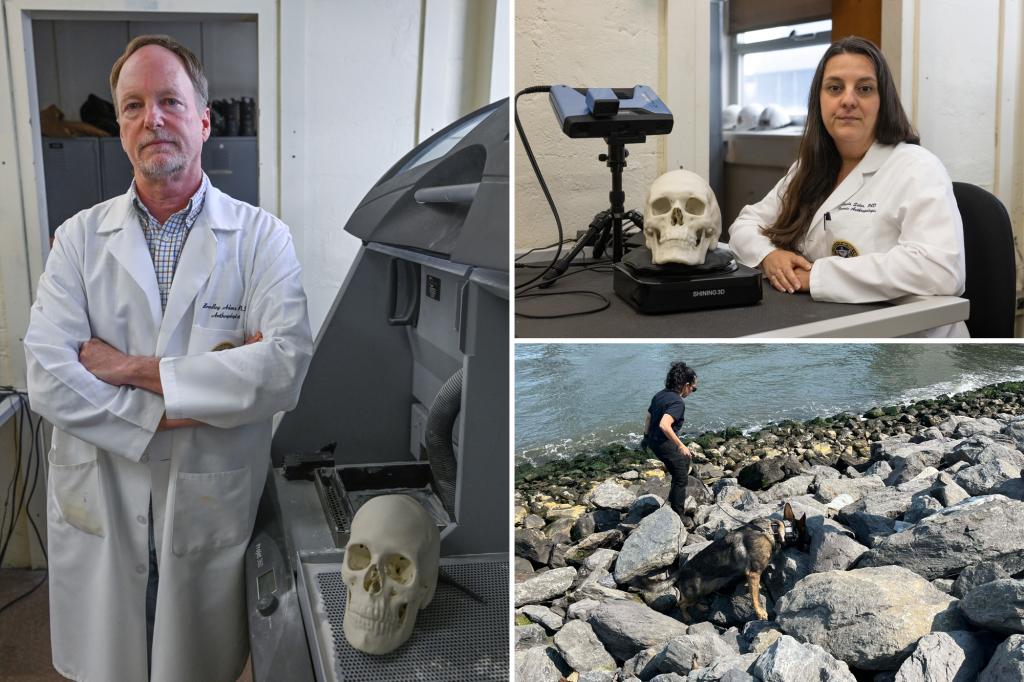When skeletal remains washed up near the Brooklyn Bridge, the Medical Examiner’s Office called in its Forensic Anthropology Unit to investigate. The team determined the victim was male based on the size and shape of the bones. They found no evidence of foul play and believe bone fragments in a nearby park are related. The investigation team relies on the bones and clothing of the victim to identify him and determine his cause of death. The unit typically works on cold cases, from the 1980s and 1990s, using the latest technology to help solve mysteries that have haunted families for decades.
One of the cold cases recently solved by the team was that of a 16-year-old known as “Midtown Jane Doe.” The remains of the girl had been found in 2003, buried under a club that once housed music legends. By using genetic genealogy, the team was able to determine the girl’s identity as Patricia McGlone. Unfortunately, her direct relatives were deceased, but a second cousin connected to a 9/11 victim provided a DNA sample that confirmed the match. This breakthrough highlighted the impact of genealogy in solving long-standing mysteries and bringing closure to families who have been searching for answers over the years.
The team is also working on the case of a woman whose remains were found under a nightclub in Tribeca in 2008. The woman was wrapped in plastic and buried in concrete, with personal items providing clues to her identity. Coins dated from 1983 and 1984 suggest she went missing during that time period. The office is now turning to genetic genealogy to try and identify this woman and bring closure to her case. However, some cases remain challenging due to a lack of evidence, such as a partial skull found in a Bronx parking lot that has yet to be identified.
In another successful identification, the team was able to determine the identity of a young woman whose remains were found floating in the East River in 2000 as Alexa Skolnitsky. Using genetic genealogy and the support of organizations like the National Center for Missing and Exploited Children, the team was able to provide answers to the family who had been searching for Alexa since 1999. While the news of a loved one’s demise is devastating, there is also a sense of closure and gratitude in finally knowing the truth after years of uncertainty. The team continues to work diligently on cold cases, utilizing cutting-edge technology to bring closure to families and solve long-standing mysteries.
The Forensic Anthropology Unit handles about 150 cases annually, using their expertise to determine the age, sex, and ethnicity of individuals from skeletal remains. The investigators work out of a government building in Manhattan’s Upper East Side, using DNA analysis and genetic genealogy to aid in identification. The advancements in technology have allowed the team to revisit and solve cases that were previously unsolvable due to limited resources and technology. Through their dedication and perseverance, the team aims to help families find closure and bring justice to the victims who can no longer speak for themselves.
The work of the Forensic Anthropology Unit is crucial in solving cold cases and providing answers to families who have been searching for their missing loved ones for years. By leveraging advancements in technology such as genetic genealogy, the unit has been able to bring closure to numerous cases that have remained unsolved for decades. The emotional toll of these cases is evident, as families grapple with the difficult reality of finding out the fate of their loved ones. Despite the challenges and obstacles they face, the team remains committed to their work, providing hope and resolution to those who have been waiting for answers. Through their efforts, the unit shines a light on the stories of the deceased, allowing their voices to be heard beyond the confines of forensic analysis.


